Usage of Subjective Indicators in Monitoring and Programming of Training
Introduction
Process of preparing the athletes for competitions can be considered complex adaptive system [15, 17, 19, 21] that can be further divided to (1) training, (2) competition and (3) recovery sub-systems.

Coach is the person that utilize feed-forward and feed-back information to manipulate key constraints of this complex system with the aim of bringing it’s state and behavior to the desired level (and at the desired time), mostly influencing it with training stimulus that is compromised of (1) training workload (intensity, volume, frequency, etc), (2) training means or exercises and (3) training methods [15, 17, 18]. This process of management is constrained by three factors, notably (1) current state and performance, (2) outcome/performance/process goals and (3) context [15, 17].
The behavior of this system (both at the team level and at the individual level) or its performance is influenced by the following group of factors (that are addressed by training elements) [17]:
- Technical preparedness
- Tactical preparedness and decision making
- Physical preparedness
- Psychological preparedness and mental toughness
- Athlete character and communicational skills
- Strategy and game plan
The organization of the training process with the aim of bringing each of these elements to desired state (goal) can be seen through three levels: (1) periodization, (2) planning and (3) programming [18, 19].
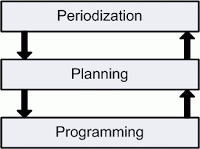
These three levels can be seen as different zoom levels of organization of the training process and each has certain set of principles that constraint it’s organization. Three levels are interconnected and interrelated.
Coach needs to utilize flexible enough approach in the organization of the training process and it can be said that mentioned three levels have different flexibility, with the programming level being most flexible and periodization level being most rigid [15]. Flexibility is very important quality since the behavior of complex adaptive systems such as preparation process can be very unpredictable [10]. Mike Tyson used to say that “Everybody has a plan until he is punched in the face”, which pretty much sums up the problems of controlling and organizing the training process [21].
To achieve this flexibility, coach need to modify the training stimulus and training process in general according to the athletes reactions to training (adapt the training to the athletes, not vice versa) which are termed training effects [10, 11, 12]. Vladimir Issurin classifies training effects to the following groups:
- Acute training effects
- Immediate training effects
- Cumulative training effects
- Delayed training effects
- Residual training effects
For further information on these training effects interested reader is director to the work of Vladimir Issurin [10, 11, 12].
To assess and evaluate these training effects, coach can use different kinds of (1) monitoring, (2) testing and (3) competing and competition analysis [15]. This kind of analysis can yield a cause-and-effect laws that can be used to guide the training process in the future and expand practical or empiricism knowledge. This concept is depicted in the following picture
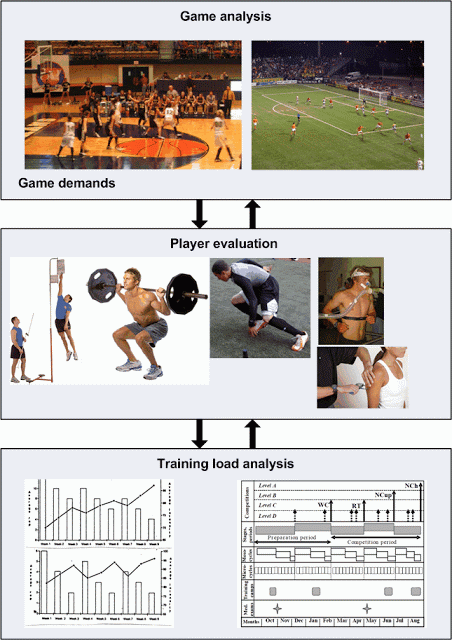
The rest of this article will concentrate on monitoring of the subjective indicators of acute and immediate training effects and its usage as a feedback in programming the training process.
Acute training effects
The changes occurring in athlete’s state during the training or exercise determine acute training effects [10]. Three groups of measures characterize the acute training effect: (1) indicators of training workload (such as intensity, power, volume, and speed), (2) physiological variables (such as heart rate, blood lactate, VO2) and (3) psychological indicators (like affective loading and rate of perceived exertion – RPE or intensiveness) [10].
We are going to expand further on the usage of psychological or subjective indicators of acute training effect.
Since the brain integrates all the information from the periphery of the body and the state of the body homeostasis [3], humans are basically equipped with the best monitoring tool – their brain. Numerous quantification systems developed over the years with the aim to assess this subjective feel and one of the most famous is the Borg’s scale or RPE – rate of perceived exertion. Although the original scale was fro 6 – 20, new modified scale from 0-10 is more understandable and more used today. Research shows high reliability of the RPE scale and its high correlation to physiological variables (heart rate and blood lactate accumulation) and training workloads, which basically supports usability of monitoring subjective feel in training[1,5,9,13,24]. Indeed, RPE is well known to be related to chest and active mass muscle parameters, as well as heart rate, oxygen consumption, respiratory rate and minute ventilation, blood lactate concentrations and muscular strain [3]. Importantly, no single physiological parameter predicts the RPE during exercise indicating that this is complex system phenomena [3].
Advanced athletes are famous of being able to re-adjust their training workload based on the feel, and teaching them over time to trust their own feelings is a way to ‘teach them how to fish’, instead of using rigidly programmed training session. It is shown that abilities oscillate over the training period mostly influenced by sleep, nutrition, social factors, fatigue, stress, travel, competitions, emotions and such, so we can never know in advance how the performance is going to be on a given day. Being rigid in programming is not a way to utilize and adapt to this normal performance variability, instead being more flexible and allowing the athlete to self-organize the training based on couple of simple rules. That is how individuality in training is achieved to a certain degree.
There are numerous ways to achieve the tracking of subjective indicators, most notably the RPE and PR. RPE stands for rating of perceived exertion and PR stand for perceived readiness.
Michael Tuchscherer, a coach and power lifter developed a whole system of training programming based on usage RPE [26]. So, instead of giving certain weight percentages, number of sets and reps, Mike utilize couple of simple rules and RPE to auto-regulate (self-organize) the training based on the feel [18,26]. Exploring Mike’s system of strength training is time well spent.
Perceived readiness is also a scale (in the research it is from 7-1, but it can be from 0-10, 0-5; the key here is to pick the scale and stick to it) that is used to quantify the recovery during the training session and auto-regulate recovery duration [7]. For example in planning the interval training session, instead of prescribing fixed work/rest values or using HRs, the coach can prescribe doing 1000m intervals at RPE 8 of 10 (there is a difference between starting-RPE and ending-RPE during the interval due fatigue accumulation [3]) and restarting the intervals when PR gets to 4 of 7 (where 7 is being unable to exercise, and 1 is being fully recovered) [7].
This kind of subjective workload programming is currently emerging as research topic and in authors opinion it is a way to go, since it teaches athletes to be more responsible for their own training and giving the freedom and control a certain aspect of training which can improve their long term compliance and adherence, even reduce physiological stress on the same training workload [22], and probably reduce the overall (daily, weekly) training workload (see session-RPE). One new research even shows better strength training results by utilizing auto-regulatory training [23]. Still, this kind of workload programming is still young, but again it allows taking into account day to day variability in preparedness level [18, 26]. Author suggests that the time has come to finally switch from dogmatic-linear systems to more pragmatic complex systems[1] that underlie our training philosophies and guide our training decisions, planning and programming.



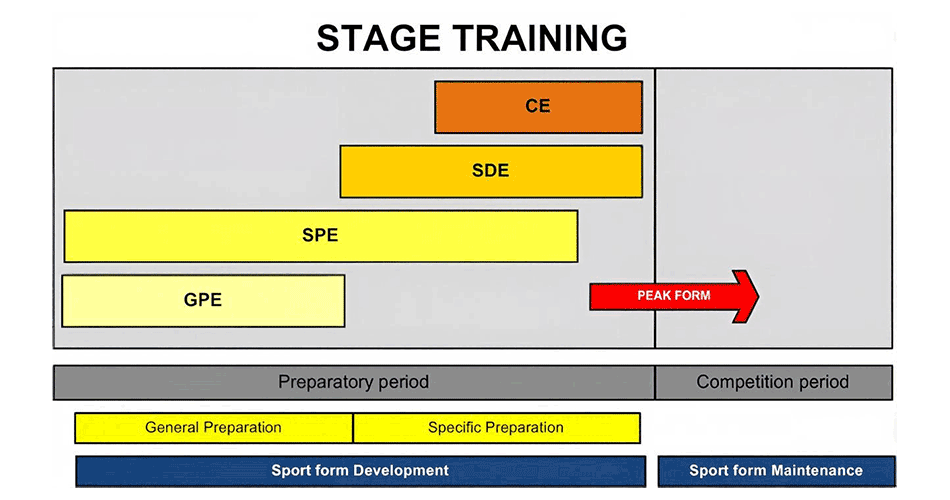
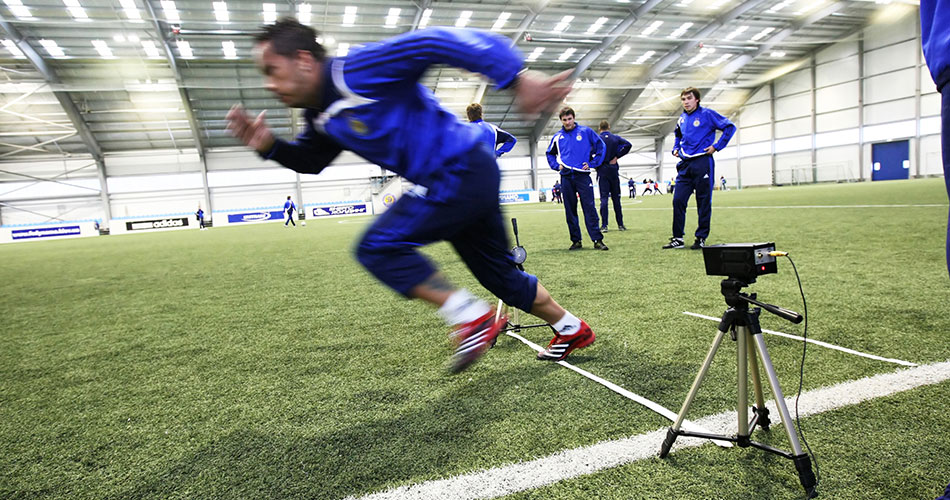
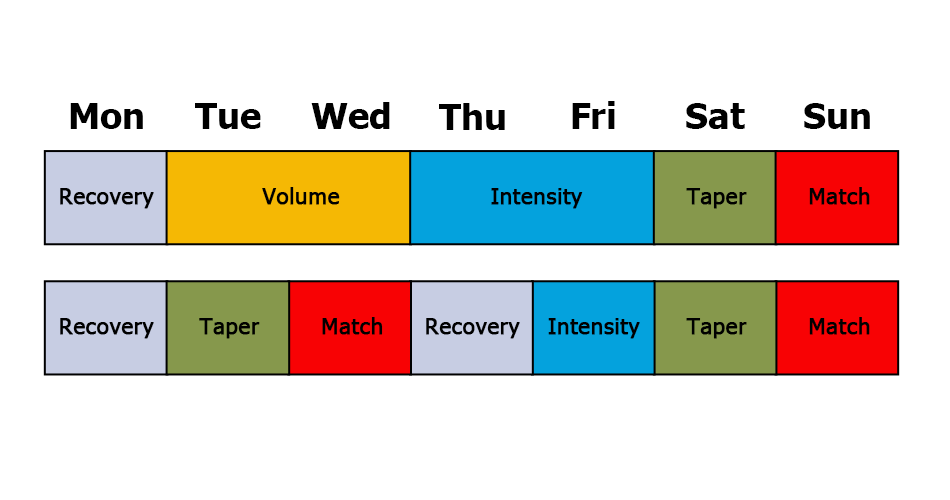
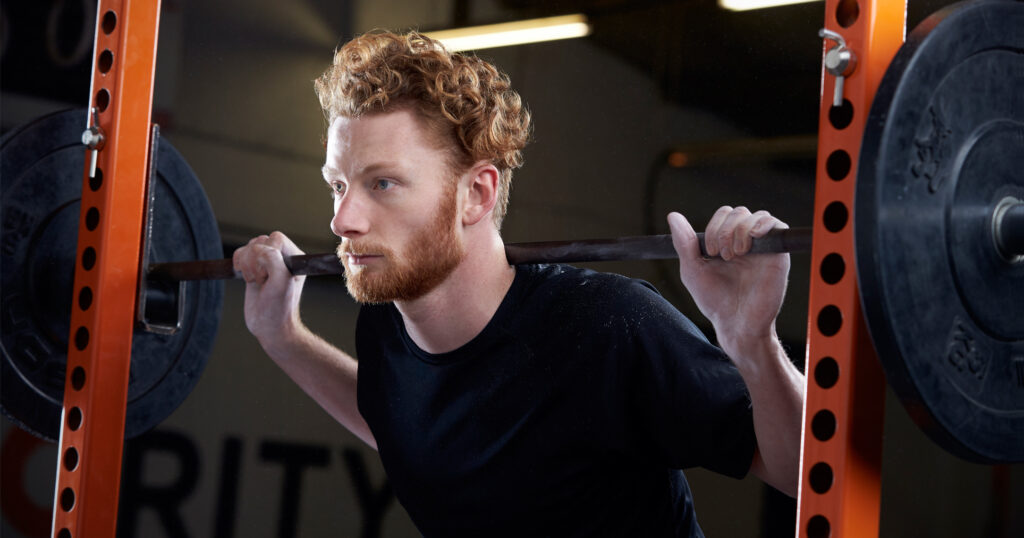






Responses